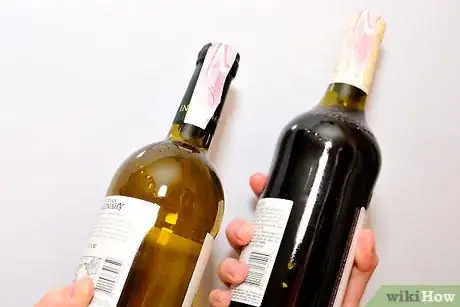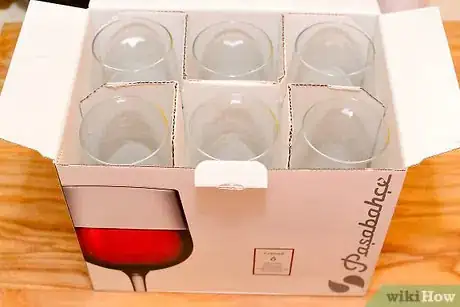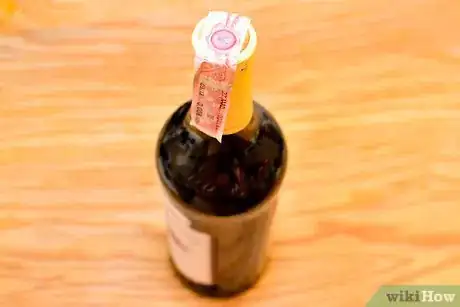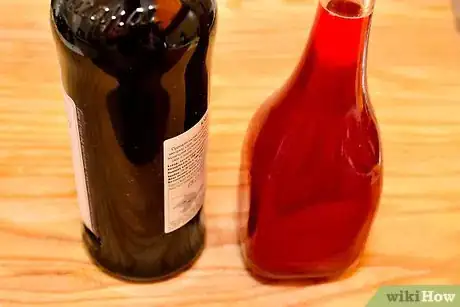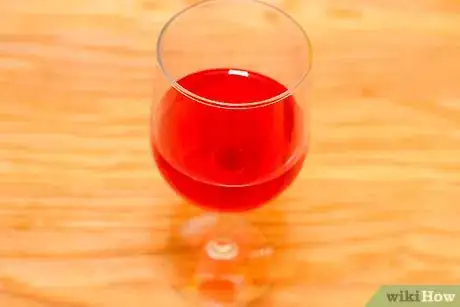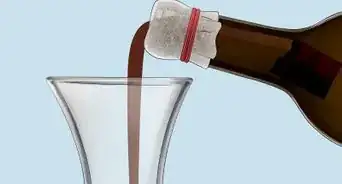wikiHow is a “wiki,” similar to Wikipedia, which means that many of our articles are co-written by multiple authors. To create this article, 13 people, some anonymous, worked to edit and improve it over time.
This article has been viewed 252,607 times.
Learn more...
Drinking port wine is a centuries-old tradition that is very popular today. Originally from the Douro River Valley in Portugal, port is a sweet dessert wine that is fortified with brandy during the fermentation process. Because of its distinct taste, the art of port drinking quickly spread to other countries and has continued to grow in popularity ever since. Learning how to drink port and the traditions that come with it may take you a little time, but once mastered, it may become one of your favorite hobbies. Some in Britain say that, when drinking port it should always be passed to the left at the table and the bottle should never touch the table. Others say this is nonsense.
Steps
-
1Choose a port you would like to drink. There are 8 varieties: white, ruby, tawny, crusted, late-bottled vintage or LBV, single quinta, colheita, and vintage. Each port variety has unique characteristics to explore, and you can seek tasting events in your area to attend. You can also research the different types of port on the Internet or in books to help you decide which type to drink.[1]
- White is made from white grapes and can be sweet or dry. Ruby is made from grapes that span several harvests and is aged in wooden barrels for at least 3 years. Tawny is similar to ruby port, but it is aged for up to 40 years or more. Crusted is also similar to ruby, but does not go through the filtering process, which gives it a crust of sediments that develop in the bottle over time. Late-bottled vintage, or LBV, is made from grapes harvested in only 1 year and aged for 4 to 6 years. Single quinta is made the same way as LBV, but features grapes only taken from 1 estate, or quinta. Colheita is a tawny port, but it is made from only 1 year's grapes and from 1 estate. Vintage, considered the cream of the port crop, is a single-harvest port aged only 2 to 3 years and set to age unfiltered. The winemaker must determine that the harvest was exceptional, and that the port will be exquisite. Then, the winemaker declares that year a vintage, and vintage port is made. As a result, vintage port tends to be an expensive rarity.
-
2Purchase the port of your choice from a local liquor supplier. If none are available, try looking on the Internet for a port wholesaler.Advertisement
-
3Purchase or have on hand glasses designed for serving port. The glasses will help you get the most from the experience. They should be standard Institut National d'Appellation d'Origine (INAO) tasting glasses, or you can splurge and purchase glasses specifically designed for port, which you can easily find through many Internet wholesalers.[2]
-
4Stand the bottle of port upright for a minimum of 24 hours for younger ports and up to 1 week for vintage ports. This allows time for the sediment in the bottle to sink to the bottom. Your port is ready when you are able to see a fine layer of sand-like particles on the bottom of the bottle.
-
5Uncork the bottle carefully with a wine key style corkscrew once the sediment timing is complete. The older the port, the more difficult the cork will be to remove and the more likely the cork will break, since corks tend to dry out with age.[3]
-
6Decant the port. Carefully and slowly pour the liquid into a decanter. When you reach the bottom of the bottle, stop pouring port once you spot the sediment enter the neck of the bottle. For best results, use a decanter that has a funnel so you can easily and quickly see the sediment before it escapes the bottle.[4]
-
7Rest the port in a location that will help the liquid to achieve a temperature of between 70 to 80 degrees Fahrenheit (21 to 27 degrees Celsius).[5]
-
8Pour the port from the decanter into your serving glass. Etiquette suggests filling each glass no more than half full.
Community Q&A
-
QuestionIs LBV a good port?
 Community AnswerLBV stands for Late-Bottled Vintage. It essentially means that it's a wine that showed great potential but was not quite good enough to earn the vintage label. Instead, it is aged longer than an actual vintage port before it is bottled, hence the name "late-bottled." This also means that an LBV is meant to be drunk not too long after you buy it. LBV is the more affordable alternative to an actual vintage port. The taste will be similar, but of course, a real vintage port is something very special.
Community AnswerLBV stands for Late-Bottled Vintage. It essentially means that it's a wine that showed great potential but was not quite good enough to earn the vintage label. Instead, it is aged longer than an actual vintage port before it is bottled, hence the name "late-bottled." This also means that an LBV is meant to be drunk not too long after you buy it. LBV is the more affordable alternative to an actual vintage port. The taste will be similar, but of course, a real vintage port is something very special. -
QuestionCan port be heated before drinking?
 Community AnswerSure! Try pouring a bit on your pancakes, or throw a shot into black bean soup on a cold day. Ports are lovely when warmed.
Community AnswerSure! Try pouring a bit on your pancakes, or throw a shot into black bean soup on a cold day. Ports are lovely when warmed. -
QuestionDoes port have to be refrigerated?
 Community AnswerNo. Some folks prefer it chilled when having port as a dessert wine, though. If you enjoy it chilled, chill it, but it's not necessary.
Community AnswerNo. Some folks prefer it chilled when having port as a dessert wine, though. If you enjoy it chilled, chill it, but it's not necessary.
Things You'll Need
- Port wine
- Serving glass
- Wine key
- Decanter with funnel
- Muslin cloth or nylon stocking (optional) for straining
- Flashlight (optional)
- Sipping Cup
References
- ↑ https://winefolly.com/deep-dive/what-is-port-wine/
- ↑ https://www.primermagazine.com/2011/learn/the-10-minute-guide-to-port
- ↑ http://www.wineloverspage.com/wlp_archive/port/decant.phtml
- ↑ http://www.wineloverspage.com/wlp_archive/port/decant.phtml
- ↑ https://www.primermagazine.com/2011/learn/the-10-minute-guide-to-port
About This Article
To drink port wine, start by slowly pouring a bottle of port wine into a decanter, stopping once you get close to the bottom of the bottle and start to notice sediment. Then, if it's not already, let the port wine come to around 70-80 degrees Fahrenheit. Once the wine reaches the right temperature, pour it into a serving glass so the glass is no more than half full. To learn how to choose a good port wine, keep reading!
